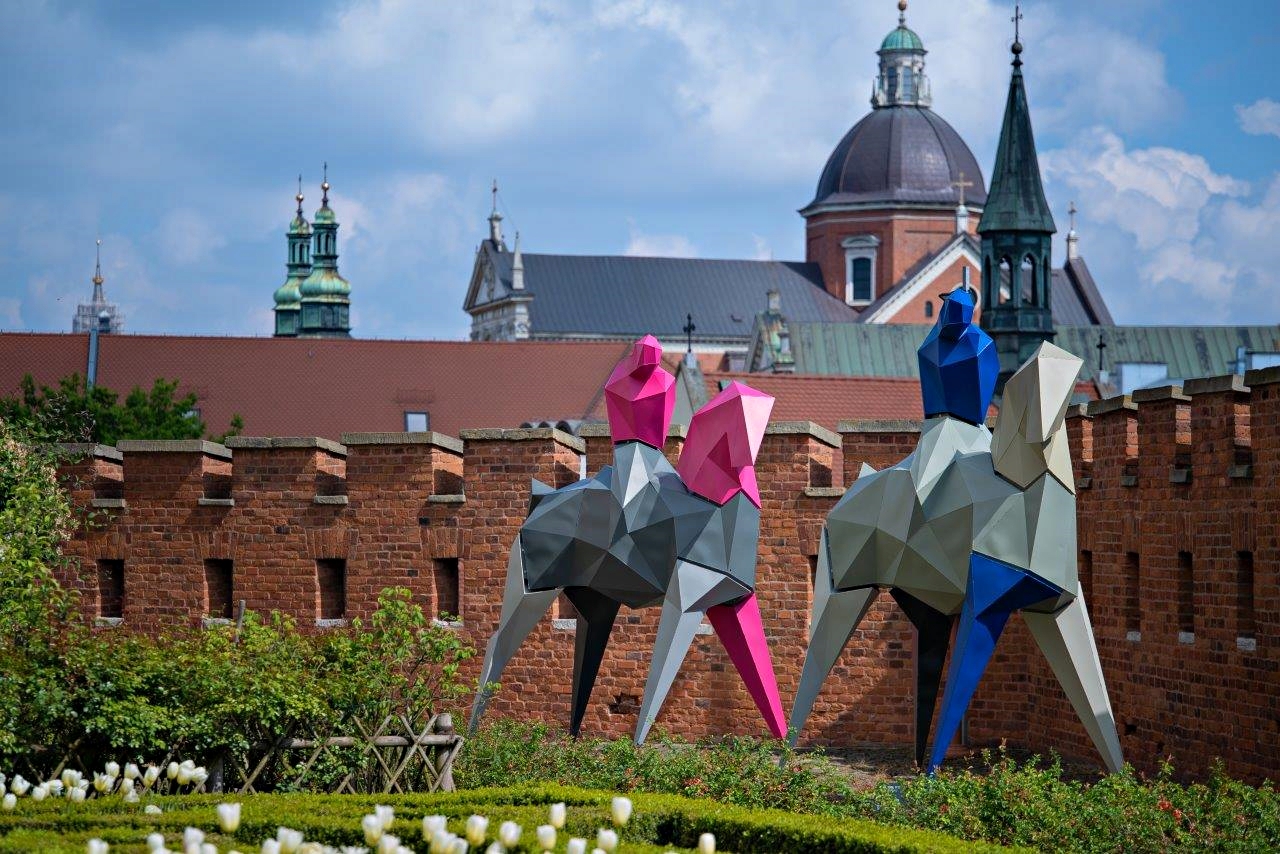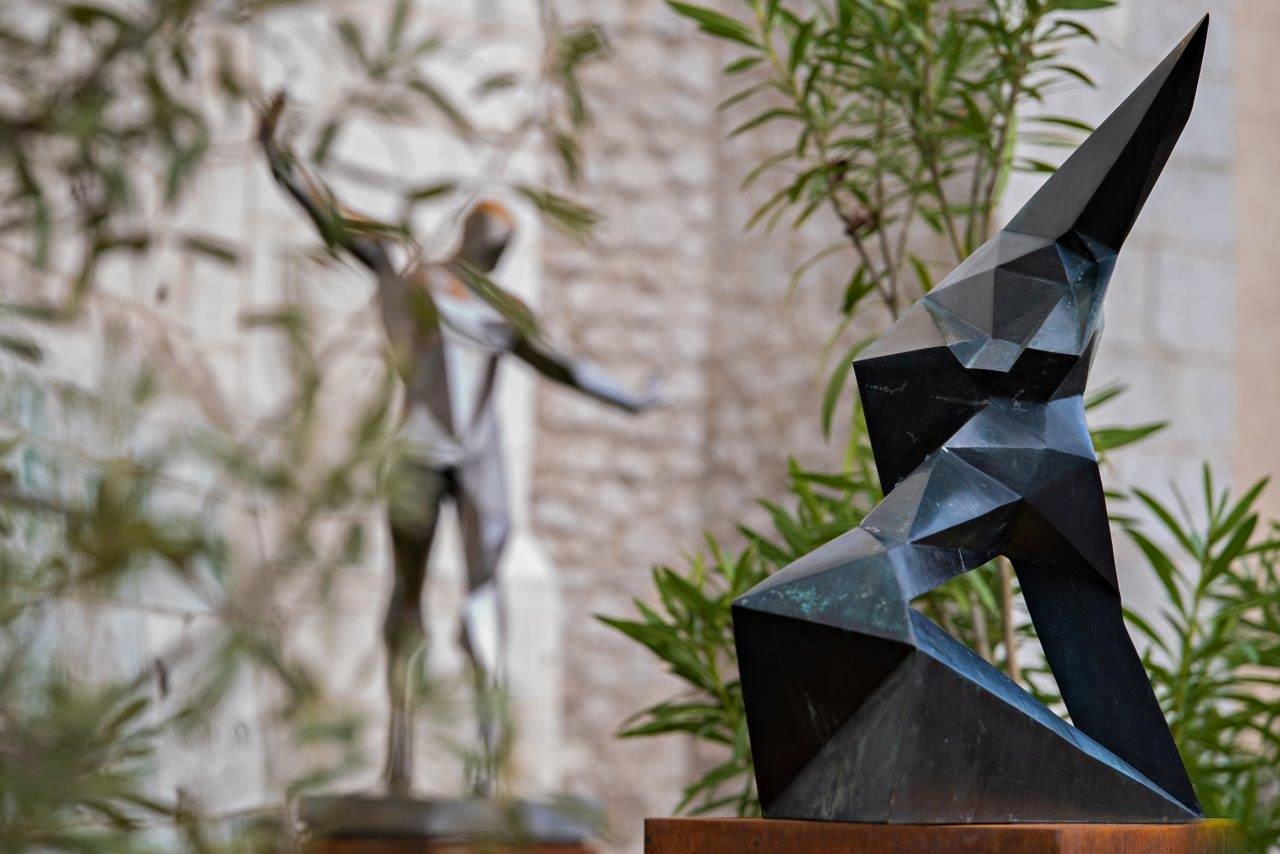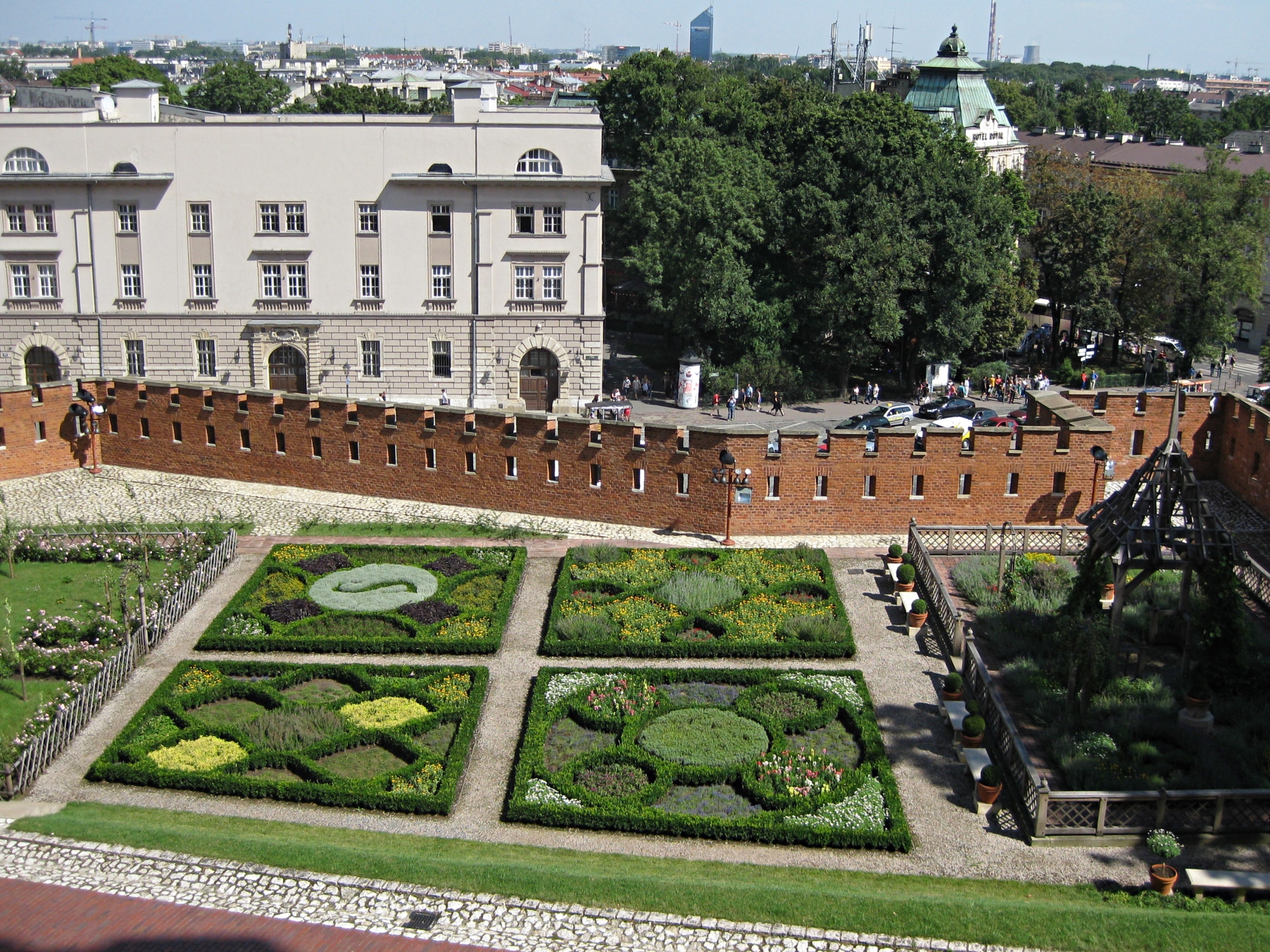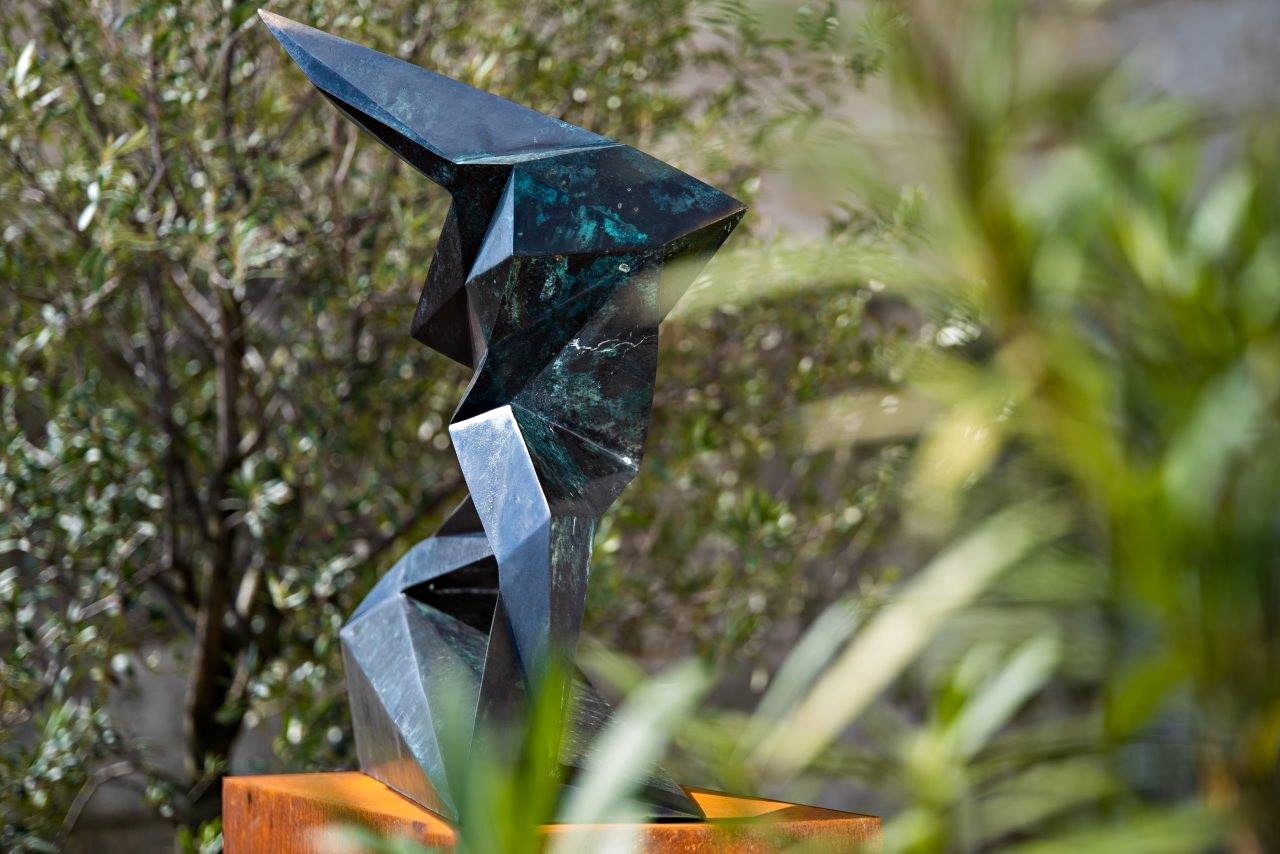The Royal Gardens at Wawel Castle have been opened to all visitors. For the first time in history, a secret passage to the gardens was made available from the arcade courtyard through the well vestibule, leading to an impressive terrace with an unforgettable view of Krakow. The exhibition ‘Contrasts’, presenting the sculptures of Paweł Orłowski, is part of a series of open-air exhibitions in the gardens of the Wawel Royal Castle that has been initiated, exemplifying the synergy of ancient and contemporary art.
“Since 2020, it has been a tradition that we open the spring-summer season at Wawel Castle with an invitation to the Royal Gardens, where we present sculptures by 20th and 21st century artists. In previous years, we admired the works of Józef Wilkoń, Bronisław Chromy and Zdzisław Beksiński. Today, we have been welcomed by Paweł Orłowski’s works, which, in contact with the historical site, will certainly evoke emotions among our guests’, says Prof. Andrzej Betlej, the director of the Wawel Royal Castle.
Visitors’ attention will be drawn not only to the historical architectural details of Wawel Castle admired from the gardens, but also to the intriguing sculptures made of metal and bronze. Dr Bogumiła Wiśniewska, curator of the ‘Contrasts’ exhibition and curator of the Wawel Royal Castle, particularly points out that by juxtaposing Orłowski’s 17 works with the historic architectural fabric of the castle, the artist’s spatial forms take on a new meaning.
Exhibition of sculptures by Paweł Orłowski. Photo: Wawel Royal Castle

“The choice of cubic sculptures, which refer to the achievements of the masters of ancient art, draw on ancient inspirations but are subjected to computer modelling, indicates a change in the perception of form and solid in contemporary sculpture. Orłowski reaches for innovation and tradition at the same time, refers to the popular formula of horse-riding statues and gives them his own form, which we present with flair in the Royal Gardens, allowing individual associations and interpretations to be built,” – says Dr Bogumiła Wisniewska.

The cubic sculptures are a formal, spatial record of modernity. The artist also sees them as avatars of the future. At the same time, they are forms that are here and now, frozen in time and expressed through the solid of the thought of art.
“In front of us, we are surrounded by the impressive architecture of the Jagiellonian royal residence, a feast of colours and scents of vegetation alluding in layout to the historic gardens. Together, we are creating a place where ancient art corresponds perfectly with contemporary art, opens up to new meanings and discourses, and prepares the audience for new sensations and delights in communing with cultural heritage,” says Dr Wiśniewska.

The Royal Gardens at Wawel Castle were opened in 2005. Archaeological work on the site began in the 1990s. Archaeologists knew from documents and surviving castle inventories that royal gardens had existed between the eastern wing of the castle and the defensive wall since the 16th century. Their creation probably began after the fire of the east wing of the castle in 1536. The gardens consisted of criss-crossing pavements of bricks carefully laid on mortar, and the resulting quarters between them were filled with black earth. Medicinal herbs and spices were grown in special oak boxes. Below Queen Bona’s garden was the garden of her husband King Sigismund I the Old, which had a leisurely character. It featured a gazebo called ‘Paradise’, and castle accounts mention the existence of a vineyard and a birdhouse. In the king’s garden, near the Gothic defensive wall, archaeologists have discovered an excellently preserved several-metre-long section of the “royal road” laid in brick that once led to the royal bath. It is now the oldest brick Renaissance road in Poland.

The Royal Gardens, although neglected during the reign of the Vasa dynasty, survived on Wawel Castle for two centuries. During the Swedish Deluge, the royal bath was destroyed. Further damage was caused by the reconstruction of the fortifications in the 18th century. However, they were finally devastated during the partitions in the 19th century by the Austrians, who had their military barracks at Wawel Castle. The first plans for the reconstruction of the Wawel gardens appeared in the interwar period. During World War II, Governor-General Hans Frank had tennis courts on their grounds. During the Second War a fire pool was built in the area, sometimes mistakenly thought to be Hans Frank’s personal pool.

The work currently being carried out and the exhibition made available to tourists aims to recreate as faithfully as possible the appearance of the gardens at the time of their creation, i.e. during the Renaissance. Using historical records and archaeological work, it has been possible to recreate very faithfully the appearance of the gardens on two of the terraces. Archaeological research is still being carried out on the third, lower terrace. Herbs and spices have appeared in the oak boxes as before. Plants dating back to the 16th century and appearing in historical accounts of Wawel Castle have been planted in small plots formed by a system of brick pavements. The reconstructed pergola was planted with grapevines and an old variety of French rose, imported to Poland from around 1600, whose restoration was undertaken by the only nursery in Poland which rescues historical varieties of plants, located in Inowrocław. Oleanders, fuchsias and cassias have been planted in magnificent ceramic pots. All this creates a unique example of a small spice renaissance royal garden. The management and caretakers of the garden promise that the vegetation of the garden will be successively supplemented with further species of historical varieties of plants cultivated in the 15th and 16th centuries.
Source: Wawel Royal Castle
Read also: Museum | Monument | Greenery | History | Krakow




































